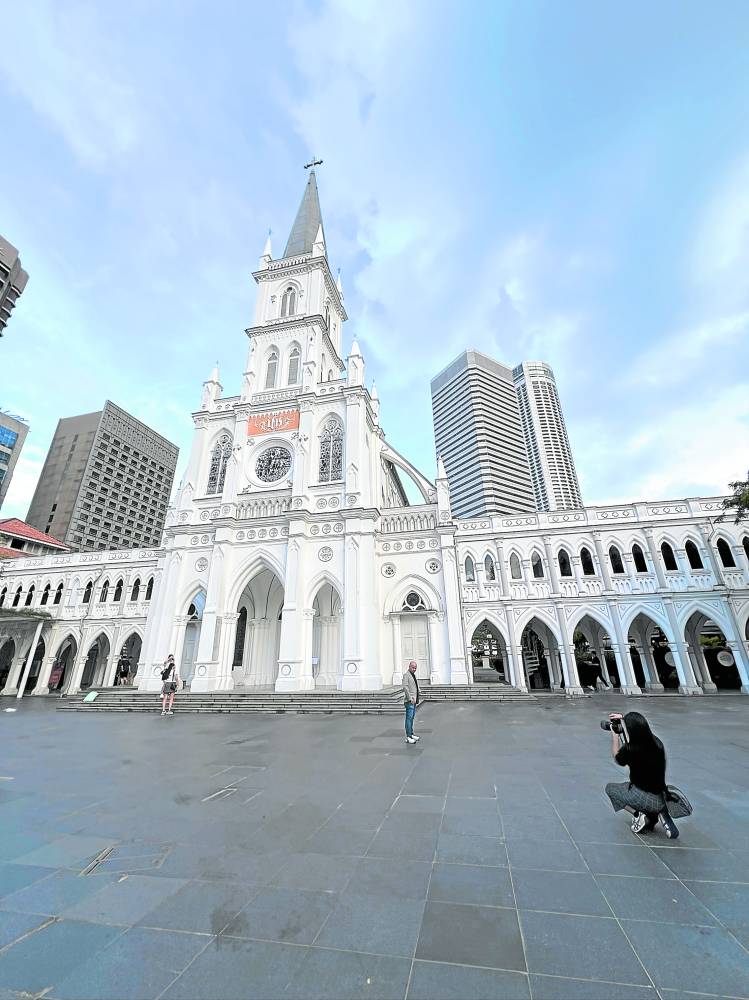
The adaptive reuse of historic buildings not only celebrates the past but also creates opportunities for economic growth and social interaction.
The adaptive reuse of historic buildings not only celebrates the past but also creates opportunities for economic growth and social interaction. The juxtaposition of old and new in Singapore is more than just a showcase of architectural diversity. It also embodies the city state’s core values of sustainability, innovation, and cultural preservation.
Through a careful balance of honoring heritage and embracing progress, Singapore has sculpted a cityscape that seamlessly blends history and modernity, creating an environment that is both dynamic and enduring.
Having lived in Singapore for nearly two decades, I find myself continually enchanted by the captivating beauty of its historic landmarks and the exhilarating energy of its contemporary developments. It serves as a poignant reminder that while the world may evolve, there are timeless elements that anchor us to our past and guide us into the future.
Powerful tool
The concept of adaptive reuse has emerged as one of the powerful tools in the pursuit of sustainability.
By embracing this approach, we not only breathe new life into old buildings but also minimize the environmental impact associated with demolition and construction. It allows us to preserve the embodied energy and materials invested in the original structure, as well as significantly reduce carbon emissions and waste generation.
Moreover, it often requires fewer resources and consumes less energy than new construction, leading to significant environmental benefits.
Additionally, adaptive reuse contributes to the revitalization of urban areas and the preservation of local identity.
By repurposing existing structures, we retain the unique character and charm of historic neighborhoods, fostering a sense of place and community pride. The adaptive reuse of historic buildings not only celebrates the past but also creates opportunities for economic growth and social interaction.
Remarkable transformation
One shining example of successful adaptive reuse is Chijmes in Singapore. Once a Catholic convent and school dating back to the mid 19th century, Chijmes has undergone a remarkable transformation in recent decades.
Originally known as the Convent of the Holy Infant Jesus (CHIJ), it was established by French Catholic nuns in 1852 and grew to include a chapel, school buildings, and other facilities. However, as Singapore evolved into a modern metropolis, the need for adaptive reuse of historic buildings became increasingly apparent.
Rather than demolishing Chijmes to make way for new construction, it was repurposed into a vibrant lifestyle destination that seamlessly blends the old with the new. The former school buildings were transformed into a dining and entertainment precinct, featuring a diverse array of restaurants, bars, and cafes. Visitors can now stroll through the charming courtyards and corridors, soaking in the atmosphere of bygone days while enjoying modern amenities and gastronomic delights.
Creating dynamic spaces
The success of Chijmes serves as a testament to the potential of adaptive reuse to breathe new life into historic structures and create dynamic urban spaces that cater to the needs of contemporary society. By preserving the architectural heritage of the past while accommodating modern functions, adaptive reuse projects like Chijmes demonstrate how sustainability and preservation can go hand in hand.
Adaptive reuse contributes to the revitalization of urban areas and the preservation of local identity.
In conclusion, adaptive reuse represents a win-win solution for sustainability and preservation. The city’s skyline is constantly evolving, as new developments rise to meet the demands of a growing population and a changing economy.
Yet, amid this rapid change, the Lion City remains committed to preserving its unique identity and sense of place, ensuring that future generations will continue to appreciate the rich fabric of history and culture that defines the country.
The author (MSc ISD, LEED GA, UAP, IA-AIA) is an architect, planner, sustainability strategist, and managing director at CORE+ Singapore Center of Resilience Environmental Experts

